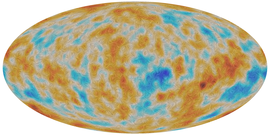Highlights from the Planck mission Marta Alvès
le 16 déc 2016 de11h00à 13h002016/12/16 2016/12/16

The Planck satellite was launched in 2009 and observed the sky at microwave and infrared frequencies during 4.5 years. Planck was the third generation space mission to measure the anisotropies of the cosmic microwave background (CMB), after the COBE and WMAP satellites. Accordingly, it provided a map of the CMB anisotropies at unprecedented resolution and sensitivity, from which an updated set of cosmological parameters was derived. Notably, the weak CMB signal was extracted from the Planck multi-frequency maps that are completely dominated by emission from our own Galaxy. So finally Planck was also a powerful instrument for Galactic and extragalactic astrophysics. I will review some of the major results from the Planck mission, from the CMB to the Galactic interstellar medium, with a special focus on the new all-sky polarization observations.




